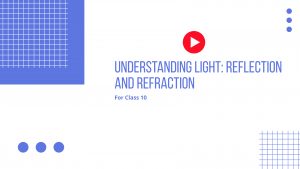NCERT Solutions for Maths Class 9 Chapter 12
CHAPTER 12
Exercise 12.1:
Question 1: A survey conducted by an organisation for the cause of illness and death among the women between the ages 15−44 (in years) worldwide, found the following figures (in %):
| S. No. | Causes | Female Fatality rate (%) |
| 1 | Repriductive health conditions | 31.8 |
| 2 | Neuropsychiatric conditions | 24.4 |
| 3 | Injuries | 12.4 |
| 4 | Cardiovascular conditions | 4.3 |
| 5 | Respiratory conditions | 4.1 |
| 6 | Other causes | 22.0 |
(i) Represent the information given above graphically.
Answer:
Graph
(ii) Which condition is the major cause of women’s ill health and death worldwide?
Anaswer: Reproductive Health is a major cause of mortality.
(iii) Try to find out, with the help of your teacher, any two factors which play a major role in the cause in (ii) above being the major cause.
Answer: Lack of knowledge and diet
Question 2: The following data on the number of girls (to the nearest ten) per thousand boys in different sections of Indian society is given below:
| Section | Number of girls per thousand boys |
| Scheduled caste (SC) | 940 |
| Schedule tribe (ST) | 970 |
| Non SC/ST | 920 |
| Backward districts | 950 |
| Non-backward districts | 920 |
| Rural | 930 |
| Urban | 910 |
(i) Represent the information above by a bar graph.
Answer:
Graph
(ii) In the classroom discuss what conclusions can be arrived at from the graph.
Answer: Number of girls are higher in ST. Number of girls are same in SC/ST and Non- Backward districts.
Question 3: Given below are the seats won by different political parties in the polling outcome of a state assembly elections:
| Politacl Party | A | B | C | D | E | F |
| Seats Won | 75 | 55 | 37 | 29 | 10 | 37 |
(i) Draw a bar graph to represent the polling results.
Answer:
Graph
(ii) Which political paerty won the maximum number of seats?
Answer: Party A won the seats
Question 4: The length of \(40\) leaves of a plant are measured correct to one millimetre, and the obtained data is represented in the following table:
| S. No. | Length (in mm) | Number of leaves |
| 1 | 118-126 | 3 |
| 2 | 127-135 | 5 |
| 3 | 136-144 | 9 |
| 4 | 145-153 | 12 |
| 5 | 154-162 | 5 |
| 6 | 163-171 | 4 |
| 7 | 172-180 | 2 |
(i) Draw a hitogram to represent the given data.
Answer: We have to represent length of leaves of \(x\) axis and number of leaves in \(y\) axis. Its scale of \(1\) unit\(=2\) leaves.
Now the class interval is in irregular interval so we have to make it regular, we can observe that difference of upper limit and lower limit is 1 and half of 1 is 0.5
| Length | Number of Leaves |
| 117.5-126.5 | 3 |
| 126.5-135.5 | 5 |
| 135.5-144.5 | 9 |
| 144.5-153.5 | 12 |
| 153.5-162.5 | 5 |
| 162.5-171.5 | 4 |
| 171.5-180.5 | 2 |
Graph
(ii) Is there any other suitable graphical representation for the same data?
Answer: Other suitable graph will be frequency polygon
(iii) Is it correct to conclude that the maximum number of leaves are 153 mm long? Why?
Answer: No, as maximum number of leaves 12 has length ranging from 144.5-153.5, so all length cannot be 153mm
Question 5: The following table gives the life times of neon lamps:
| Life time (in hours) | Number of lamps |
300-400 400-500 500-600 600-700 700-800 800-900 900-1000 | 14 56 60 86 74 62 48 |
(i) Represent the given information with the help of a histogram.
Answer:
Graph
(ii) How many lamps have a lifetime of more than 700 hours?
Answer: 75 lamps are there in 700 hours.
Question 6: The following table gives the distribution of students of two sections according to the mark obtained by them:
| Section A | Section B | ||
| 0-10 | 3 | 0-10 | 5 |
| 10-20 | 9 | 10-20 | 19 |
| 20-30 | 17 | 20-30 | 19 |
| 30-10 | 12 | 30-40 | 10 |
| 40-50 | 9 | 40-50 | 1 |
Represent the marks of the students of both the sections on the same graph by two frequency polygons. From the two polygons compare the performance of the two sections
Answer:
For section A
| Classes | Class-Marks | Frequency |
| 0-10 | 5 | 3 |
| 10-20 | 15 | 9 |
| 20-30 | 25 | 17 |
| 30-40 | 35 | 12 |
| 40-50 | 45 | 9 |
For section B
| Classes | Class-Marks | Frequency |
| 0-10 | 5 | 5 |
| 10-20 | 15 | 19 |
| 20-30 | 25 | 15 |
| 30-40 | 35 | 10 |
| 40-50 | 45 | 1 |
Graph
Question 7: The runs scored by two teams A and B on the first 60 balls in a cricket match are given below:
| Number of balls | Team A | Team B |
| 1-6 | 2 | 5 |
| 7-12 | 1 | 6 |
| 13-18 | 8 | 2 |
| 19-24 | 9 | 10 |
| 25-30 | 4 | 5 |
| 31-36 | 5 | 6 |
| 37-42 | 6 | 3 |
| 43-48 | 10 | 4 |
| 49-54 | 6 | 8 |
| 55-60 | 2 | 10 |
Represent the data of both the teams on the same graph by frequency polygons.
[Hint: First make the class intervals continuous.]
Answer: As it can be seen data is not continuous, and the difference in upper limit and lower limit is 1, so to make class interval continuous 0.5 needed to be added in each limit.
Class \(=\frac{Upper\space Limit+Lower\space Limit}{3}\)
| Number of Balls | Class Mark | Team A | Team B |
| 0.5-6.5 | 3.5 | 2 | 5 |
| 6.5-12.5 | 9.5 | 1 | 6 |
| 12.5-18.5 | 15.5 | 8 | 2 |
| 18.5-24.5 | 21.5 | 9 | 10 |
| 24.5-30.5 | 27.5 | 4 | 5 |
| 30.5-36.5 | 33.5 | 5 | 6 |
| 36.5-42.5 | 39.5 | 6 | 3 |
| 42.5-48.5 | 45.5 | 10 | 4 |
| 48.5-54.5 | 51.5 | 6 | 8 |
| 54.5-60.5 | 57.5 | 2 | 10 |
Question 8: A random survey of the number of children of various age groups playing in park was found as follows:
| Age (in years) | Number of Children |
| 1-2 | 5 |
| 2-3 | 3 |
| 3-5 | 6 |
| 5-7 | 12 |
| 7-10 | 9 |
| 10-15 | 10 |
| 15-17 | 4 |
Draw a histogram to represent the data above.
Answer: Here class size will be 1
| Age in Years | Number of children Frequency | Width of class | Length of rectangle \(\frac{Number\space of\space children}{width\space of \space class}\times class\space size\) |
| 1-2 | 5 | 1 | 5 |
| 2-3 | 3 | 1 | 3 |
| 3-5 | 6 | 2 | 3 |
| 5-7 | 12 | 2 | 6 |
| 7-10 | 9 | 3 | 3 |
| 10-15 | 10 | 5 | 2 |
| 15-17 | 4 | 2 | 2 |
Graph
Question 9: 100 surnames were randomly picked up from a local telephone directory and a frequency distribution of the number of letters in the English alphabet in the surnames was found as follows:
(i) Draw a histogram to depict the given information.
Answer: Here we have to draw modified table with class size 2
| Number of letters | Number surname Frequency | Width of class | Length of rectangle \(\frac{Surname\space of \space students}{Width\space of\space class}\times Class\space size\) |
| 1-4 | 6 | 3 | 4 |
| 4-6 | 30 | 2 | 30 |
| 6-8 | 44 | 2 | 44 |
| 8-12 | 16 | 4 | 8 |
| 12-20 | 4 | 8 | 1 |
(ii) Write the class interval in which the maximum number of surname lie.
Answer: 6-8 is the class interval where maximum sir names lies.
Study materials
- Refernce Books
- NCERT Solutions
- Syllabus







